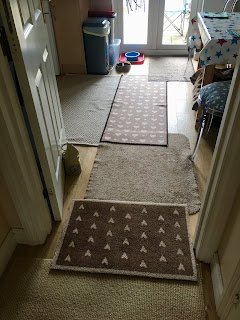As a Canine Physical Therapist with over 8 years of experience treating our own dogs and, as a successful business, hundreds of other dogs, I have discovered that, where seeing a professional undoubtedly helps, that isn't the whole story.
The therapist can't always be on hand 24/7 but you, their carer, on the other hand, are more likely to be. By teaching you a regular massage and exercise regime that, together with a personalised workbook with illustrations of the techniques applicable to your dog, you will be able to support your dog. This applies equally whether that’s an agility dog with warm-up and cool-down routines, a less able dog through disease or recovery from surgery, or an older dog needing help with mobility and arthritis.
With this focus towards helping you help your dog, I have found my regular dogs benefiting far more from this regime than just the therapist's visit.
The dogs get a massage whenever they need it rather than when it fits the diary - even daily if necessary. They get their stretches, their exercises, their rehabilitation whenever is convenient.
In addition, we can discuss easing access for your dog - flooring and non-slip surface adjustments, ramps to ease passage up/down steps and refer back to your vet for issues that may require further investigation. Lifestyle changes like this, will help all day long and every day.
A famous person once said “The way you protect your power is not to hoard it, but to pass it on”…well actually it was Buffy in Season 7 but you get the idea. Rather than just showing you a couple of massage strokes, which might mean you having to go back to the therapist time and again, we help you develop your own skills and empower you with a full physical therapy routine that you can apply regularly with your dog. But we will still be there for help should you need further assistance.
Give me a call or drop me an email if you’d like to have a 1 to 1 session where we help you to help your dog. Sessions will be held here at AchyPaw HQ in Saltdean.























